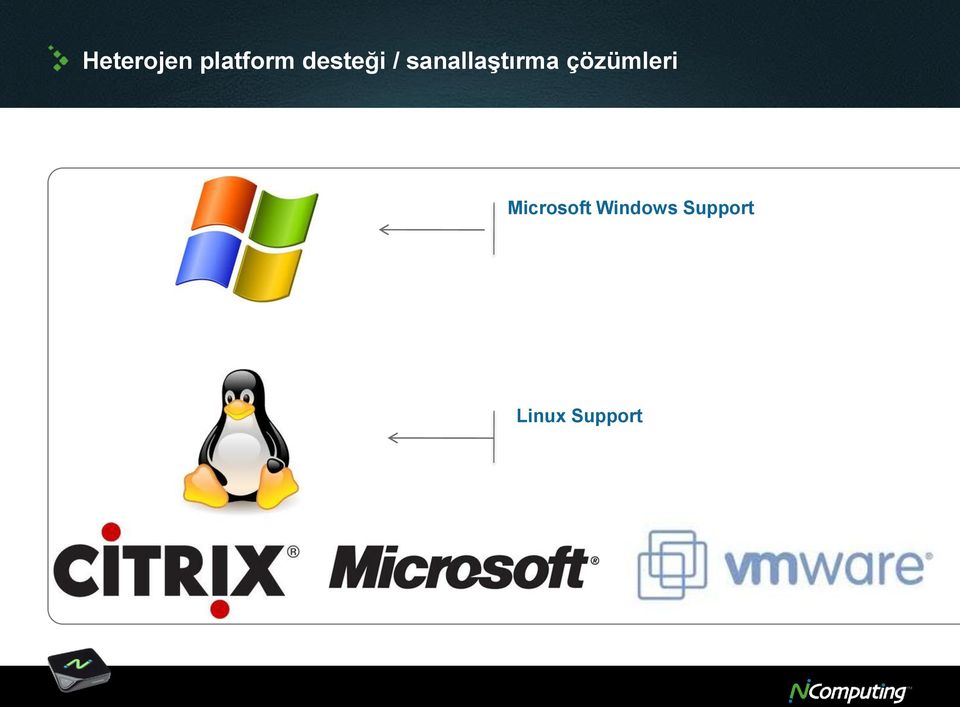Ncomputing Vspace For Windows 7 Server 6 6 9 1 Zip
With the announcement of the new Windows Azure Backup preview, we’re happy to announce the new release of the Windows Server Essentials integration module. Windows Azure Backup helps you protect important server data off-site with automated backup and restoration. You can manage cloud backups from Windows Server 2012 Essentials Dashboard by installing the integration module. To start using the Windows Azure Backup preview, please create a Windows Azure account. To begin your sign up, go to the. Then visit the to New a backup vault, download and install the integration module, and register your server.
May 16, 2018 - Step 1: Review the release notes and requirements prior to installation. The software requires Microsoft Windows 7 SP1 (32/64-bit), Windows.
If you had the previous version of the integration module installed, you must retrieve your stored data before May 4. Then you need to uninstall the previous integration module and the Windows Azure Online Backup agent, before trying the new version. To uninstall the integration module: • Go to the Essentials Dashboard. • Navigate to Applications page, Add-ins tab. • Remove the online backup add-in. To uninstall the Windows Azure Online Backup agent: • Go to Control Panel. • Click Uninstall a program.
• Remove the Windows Azure Online Backup. Data from the earlier preview will be available until May 4, 2013. It will not be transferred to the new Windows Azure Backup preview. Please make sure to retrieve any data that you wish to retrieve before uninstalling the old integration module. Webcast: “High Availability 101 with Windows Server 2008 R2 Hyper-V” Webcast: “Failover Clustering Feature Roadmap for Windows Server 2008 R2” Webcast: “Innovating High Availability with Cluster Shared Volumes” Webcast: 'Automating and Managing Windows Server Failover Clusters with PowerShell' Webcast: 'Failover Cluster Troubleshooting with Windows Server 2008 R2' Deployment: Webcast: 'High Availability Server Apps with Windows Server 2008 R2 Failover Clusters' Webcast: 'Clusters and Virtualization: Guest Clustering vs. Host Clustering' Webcast: “Multi-Site Clustering with Windows Server 2008 Enterprise” File Services and Storage announcements •.
Thank you for posting in TechNet forum. The online problem solving can be relatively time consuming because it may demand several messages back and force to fully understand the symptom and background, especially at the very beginning. Here are a few suggestions that help you get the best answer to your question as quickly as possible. When You Ask 1. Selecting a good title which summarizes the specific problem you have. It will be the one of the main driving forces for others to want to actually read your item.
Choosing a badly-formatted title will drive people away, thinking that since the title is so badly written, so must be the information and the question within the thread. Provide all the necessary information in your initial post. The following information would be very helpful: - Symptom description: Detailed description of the problem. If you receive any error messages, please let us know the exact error WORD BY WORD. - Environment: The system environment, such as your OS/application version, your network topology, and your domain environment, etc. - Any recent relevant configuration change(s): If the issue started to occur after installing any application/updates or changing the configuration, please let us know. - Any additional information.
Tell what you have done prior to asking your question. This will help us understand that you've done so far. Write in a clear language. Avoiding spelling mistakes or grammatical errors.
Don't type IN ALL CAPS, which in most cases is read as shouting and considered rude. Keep with the same thread. Do not refer to a post you made last year, and above all, Please come back. There are hundreds and thousands of posts where we have seen people given great and wonderfully long answers yet no reply from the original poster. Iso ps2 fr. Be courteous to reply, even if it's to say. 'I've given up' or thanks that worked. (This helps the whole community when you do this, and makes the people who donate time, warm and fuzzies.) When answered Give Positive Feedback.
Once you've received a correct answer to your question, either from a Microsoft employee, an MVP, or the community in general, pleases replies that the issue or question has been answered. And if possible mark the solution as answered: This step is important, since it lets other people benefit from your posts.
The content of this post was borrowed from: •. On 7/8/2008, a security patch was released for DNS by Microsoft and other DNS server vendors. The Microsoft patch was tracked as KB953230 - the documentation on it is. As part of the patch, DNS now reserves 2500 UDP ports - including the ports from 64000 to 65000 that WDS uses by default. Because of this, if DNS and WDS are running on the same server, WDS cannot access those ports and so is unable to perform TFTP (required for PXE boot) or Multicast. To work around this, open the WDS MMC, select your server, and go to Server Properties from the right-click menu or the Action menu.
